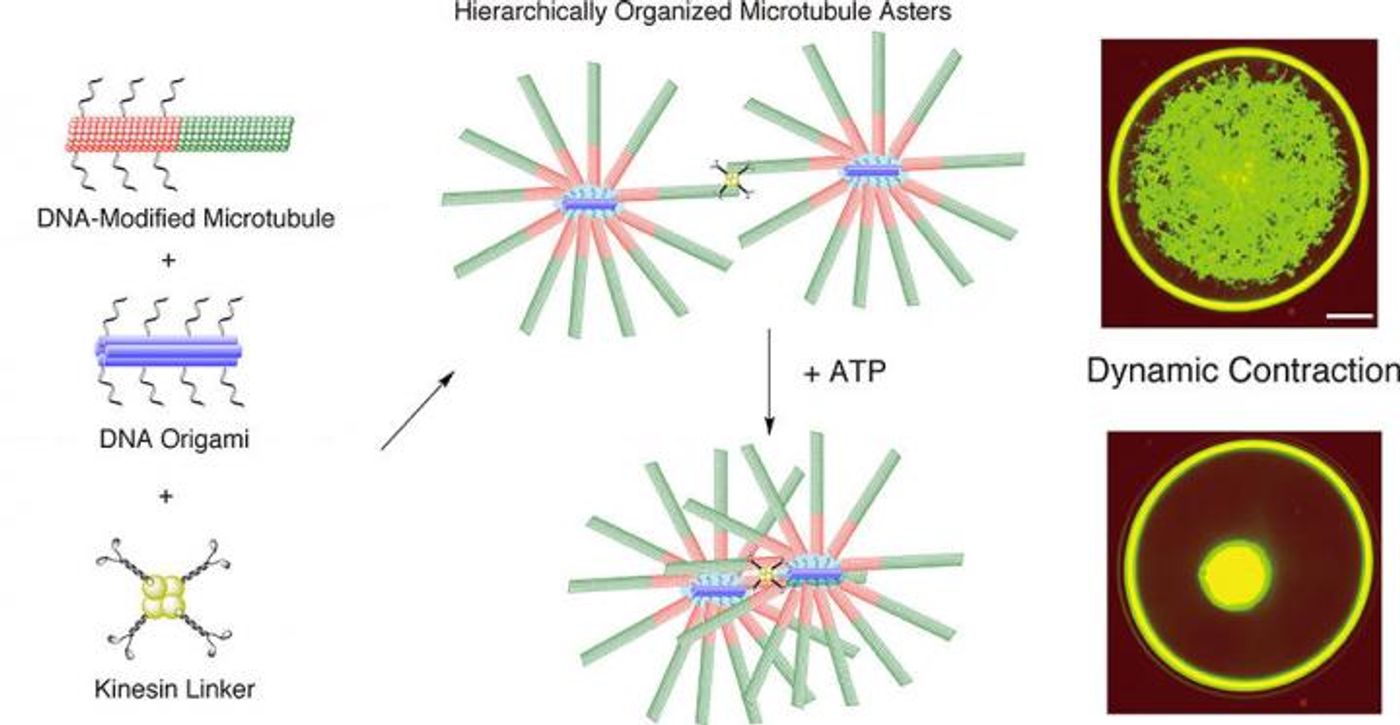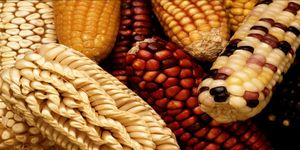Building Better Molecular Motors
The DNA molecule has special characteristics that have made it a useful tool in the development of molecular robots; it can self-assemble and is selective and specific in its arrangement, for example. Now scientists are hoping to expand the ways that DNA-based molecular robots can be applied. A team of researchers has now engineered a molecular motor using DNA origami, microtubules - part of the cell's structural network, and kinesin proteins to create a molecular motor that can contract.
Reporting in the ACS journal Nano Letters, Akira Kakugo of Hokkaido University, Akinori Kuzuya of Kansai University, and Akihiko Konagaya of the Tokyo Institute of Technology and colleagues have created DNA origami by bundling six DNA helices together and mixing the bundle with microtubules and kinesin. Kinesin is a protein that can move along the microtubule network. In the mixture, the microtubules self-assembled around the DNA origami, generating star-shaped structures, as complementary DNA strands bound to each component. The researchers created what they called a self-assembled biomolecular motor system.
In this motor, researchers state that "the Kinesins act as the actuator that propel microtubules, and DNA functions as both sensors and the processor," in their so-called molecular swarm robots. Instead of using many single-stranded DNA molecules, the scientists utilized DNA origami, which can act as a nanostructure. The kinesins link the microtubules, which create a cellular transport system when matched with the DNA origami structure.
ATP (adenosine triphosphate) provides the energy that powers many essential cellular processes. When the researchers added it to the system they engineered, the kinesin linkers starting moving, and the network of microtubules contracted within minutes, and is shown in the video. Because this dynamic contraction event only happens when DNA origami is around, the investigators hypothesized that the microtubule network has a hierarchical assembly.
"Further studies could lead to the use of DNA for controlled, programmable self-assembly and contraction of biomolecular motors. Such motors could find applications in molecular robotics and the development of microvalves for microfluidic devices," said Akira Kakugo.
Check out another DNA-based molecular robot in the video.
Sources: AAAS/Eurekalert! via Hokkaido University, ACS Nano Letters










